Pokémon Picross seems like a combination that would be tough to screw up. Good thing the game itself is great. It’s free-to-play — uh-oh! — which could ruin a game as compulsively playable as this, but Nintendo has managed to implement that in — phew! — a very friendly way. Have a 3DS? No brainer here. Download now.
The game is a proper mix of the uber-popular Pokémon series and the cult-favourite Picross games. It’s more the latter than the former, since the gameplay is very much Picross: you’re given a grid surrounded by digits that indicate the number of pixels that you should draw into each line or column of the grid. As you deduce which ones to fill out, you wind up drawing a picture.
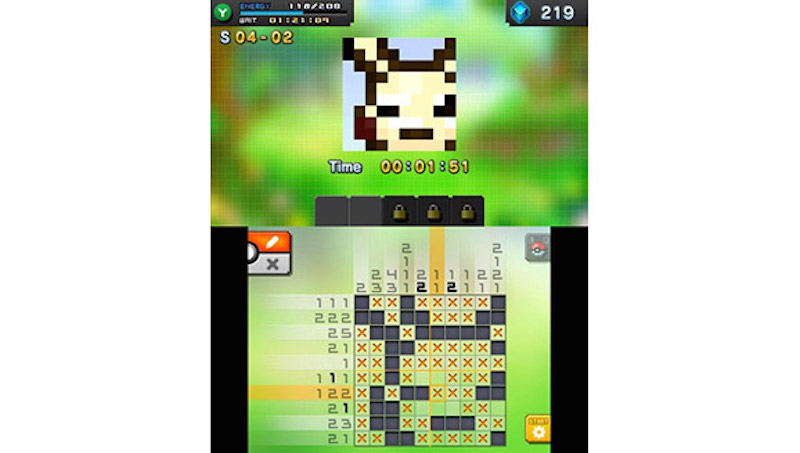
In this shot here, the picture is nearly complete. There are just two rows that need an extra standalone pixel apiece. And those pixels should also be part of two pairs of pixels in two of the grid’s columns.
In this game, the pictures you draw are all of Pokémon. Solving a puzzle amounts to catching the pictured Pokémon. Each captured creature has a special power that can be used if you bring them with you to help you solve the next puzzle.
The image up there is of a really easy puzzle. Here’s a harder one that netted me a Mythical Celebi Pokémon:
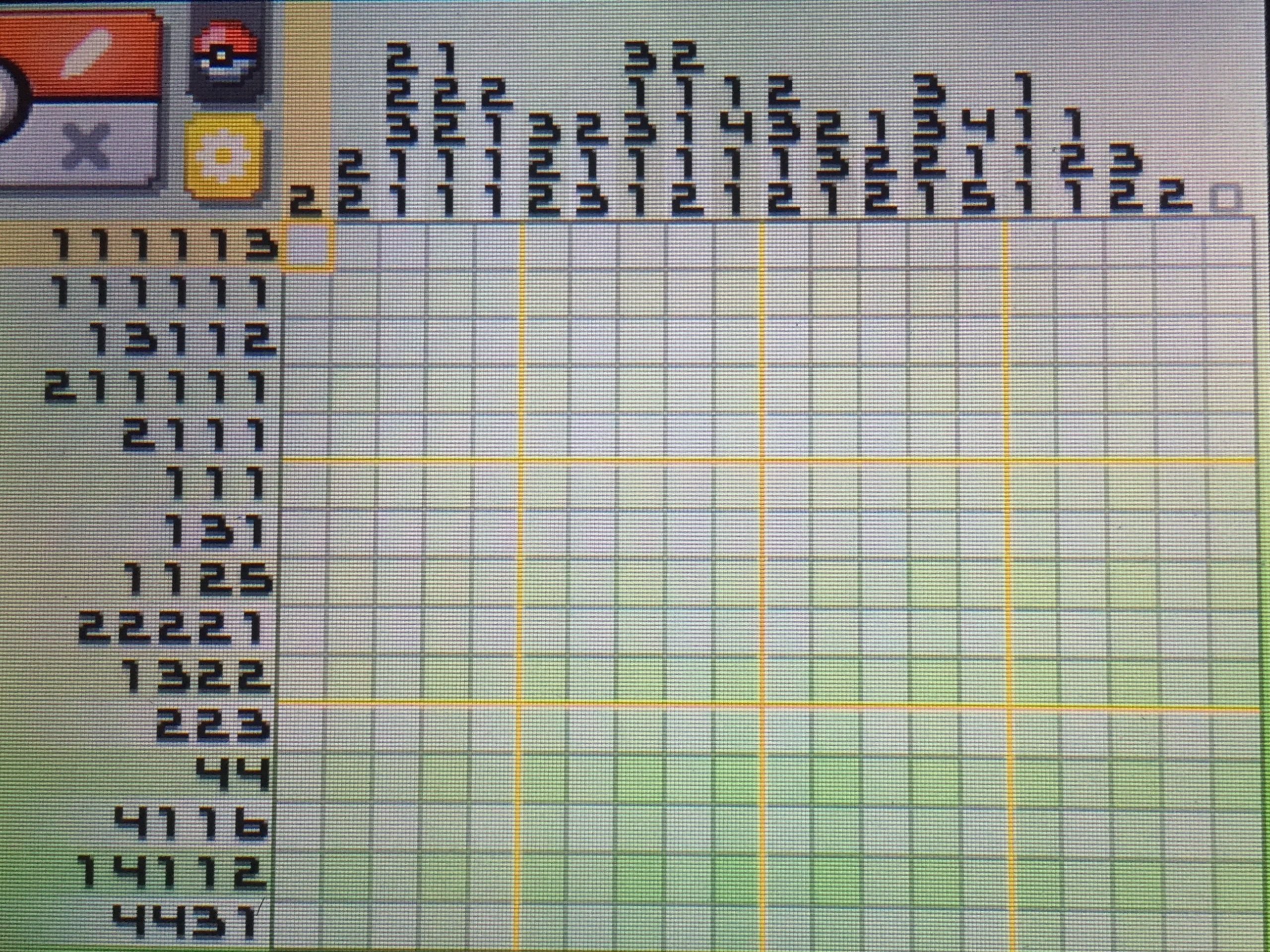
To understand how Picross works, look at the bottom row in that screenshot. Going by the numbers the game gives you-4431 — you know that the bottom line will have four consecutive pixels, then a gap of some size, then four more, then a gap, then three, then a gap, then one. You’ve got to slowly, thoughtfully deduce which blocks of pixels go where. It may seem hard, but it’s totally do-able.
That one took me about 46 head-scratching minutes to solve.
There’s a surprising amount of stuff going in the game, which was made by the Picross veterans at the studio Jupiter. The puzzles are set across a Pokémon-style overworld that has branching paths, hidden mythical Pokémon, and offshoots that lead to mega variant puzzles that, fittingly, let you collect the mega-evolved version of captured Pokémon . As you can see from the shot below, there’s also an alt world. It uses Mega Picross rules, which are a variant on the puzzle formula introduced a few Picross games ago.
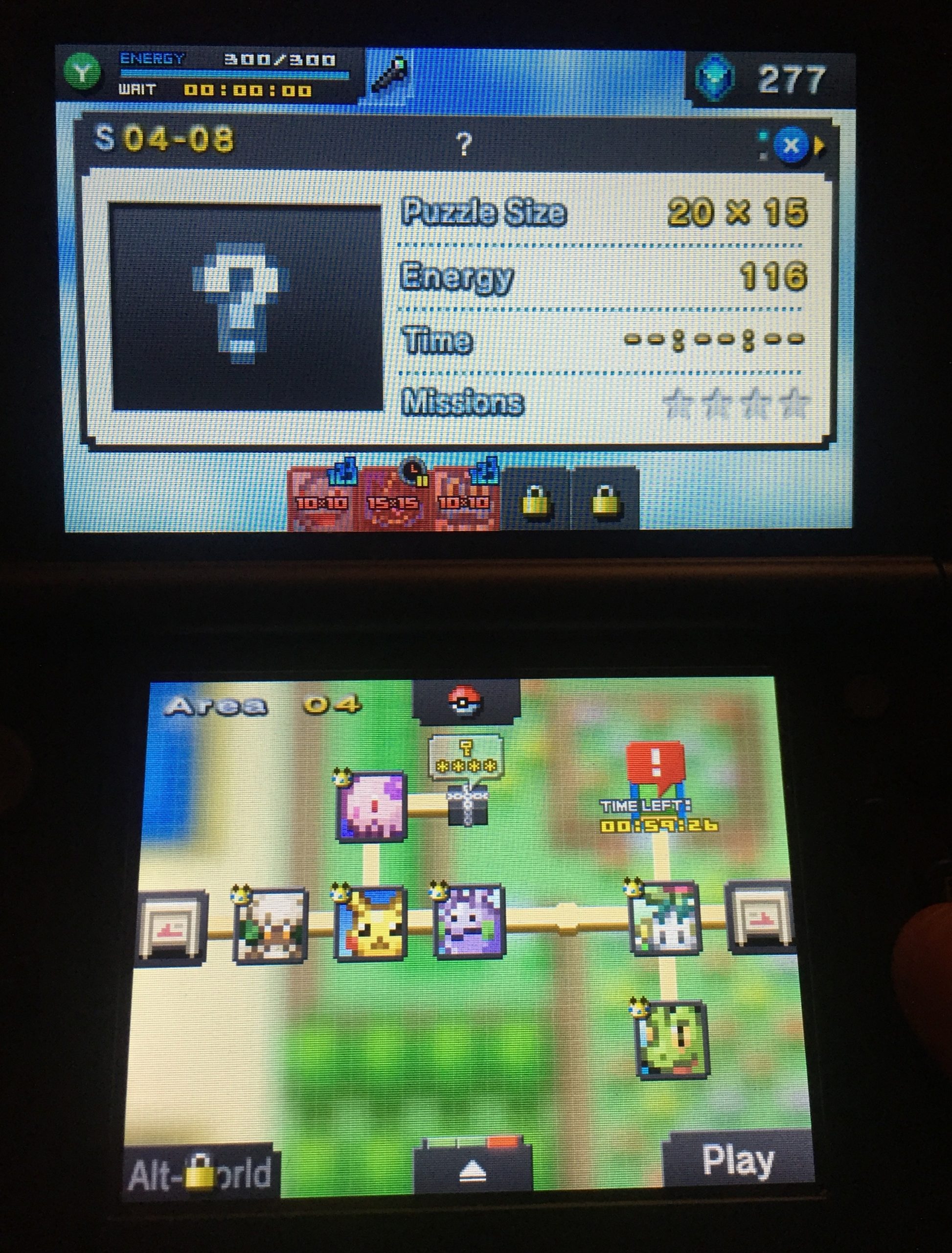
There are special win conditions for each puzzle. These challenge you to bring certain types of Pokémon into the match with you and, more interestingly, challenge you to limit the use of special Pokémon powers. Some conditions unlock mural pieces, which let you slowly fill out much more massive Picross puzzles. There’s also a daily challenge mode that tests your ability to zip through an ever-increasing number of puzzles in very little time. There are password-locked puzzles, too. I haven’t figured out how to access them. It’s all really good for Picross devotees like me.
Packed together, there’s a lot here and plenty Nintendo could and probably should charge for. But because it’s 2015, they have made Pokémon Picross free-to-play, or, as they call it, free-to-start. That’s why there’s an energy meter in the top left corner of the above image. It gets depleted as you solve puzzles. Energy fills back up over time, but you could wind up in a spot where you don’t have enough energy to do the next puzzle. Naturally, you can use the in-game currency Picrites to refill that energy meter. You use Picrites to unlock new overworld areas, too. And Picrites to access Mega-evolution puzzles. Oh, and to go to the Alt World. But, hey, you can earn small amounts of Picrites in-game or…buy them with real money.
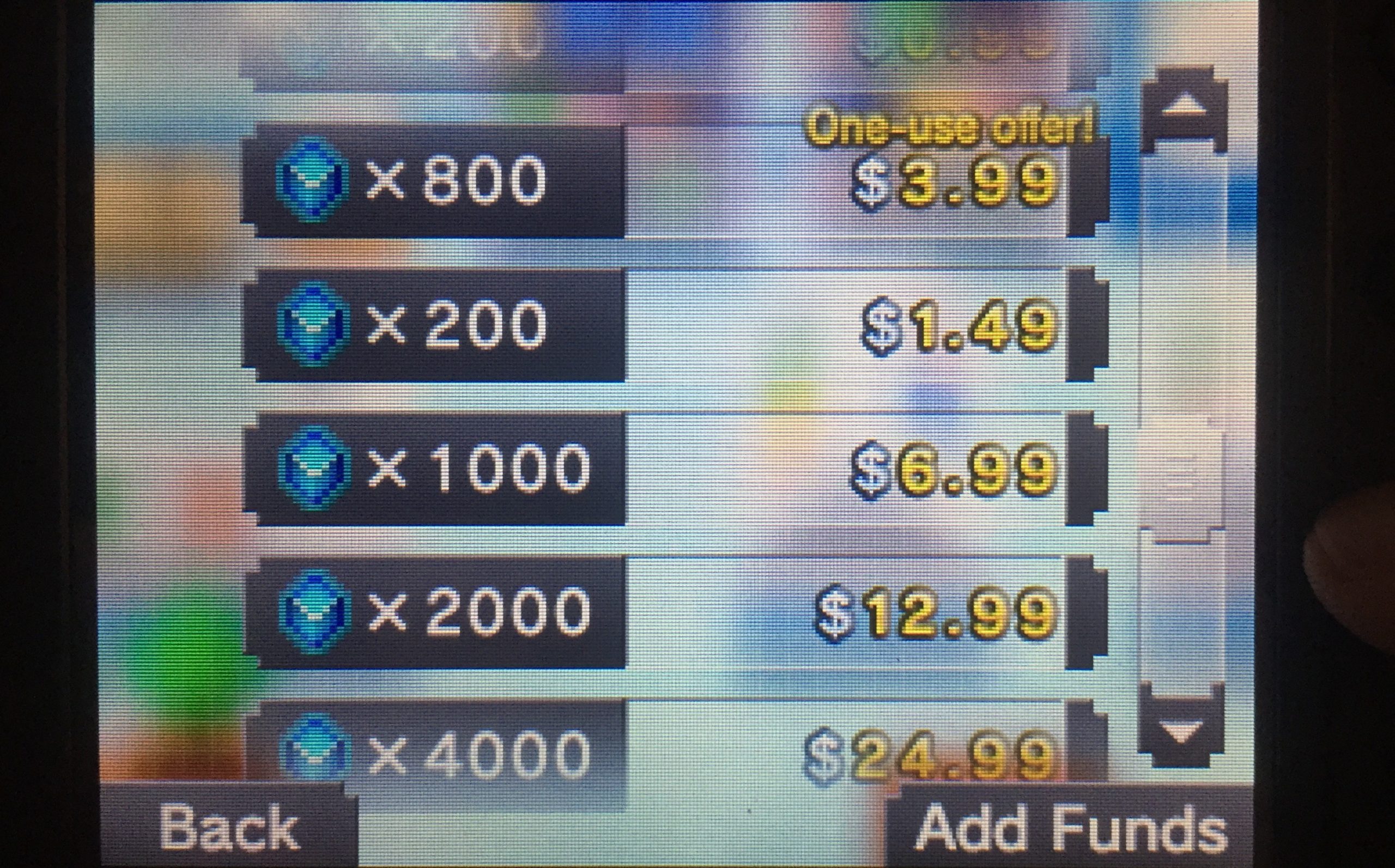
I wanted to play as much of this game as possible in the few days I had it, so I bought the 800 pack for $US4 ($5) and then the 2000 pack for $US13 ($18). The game is really well done, so $US17 ($23) actually seems like a fair amount of money to give to the developers. Here’s the twist that Nintendo has been employing with some of their free-to-start games: There’s a spending cap. You can actually only ever spend $US32 ($44) before the game makes the Picrites free.
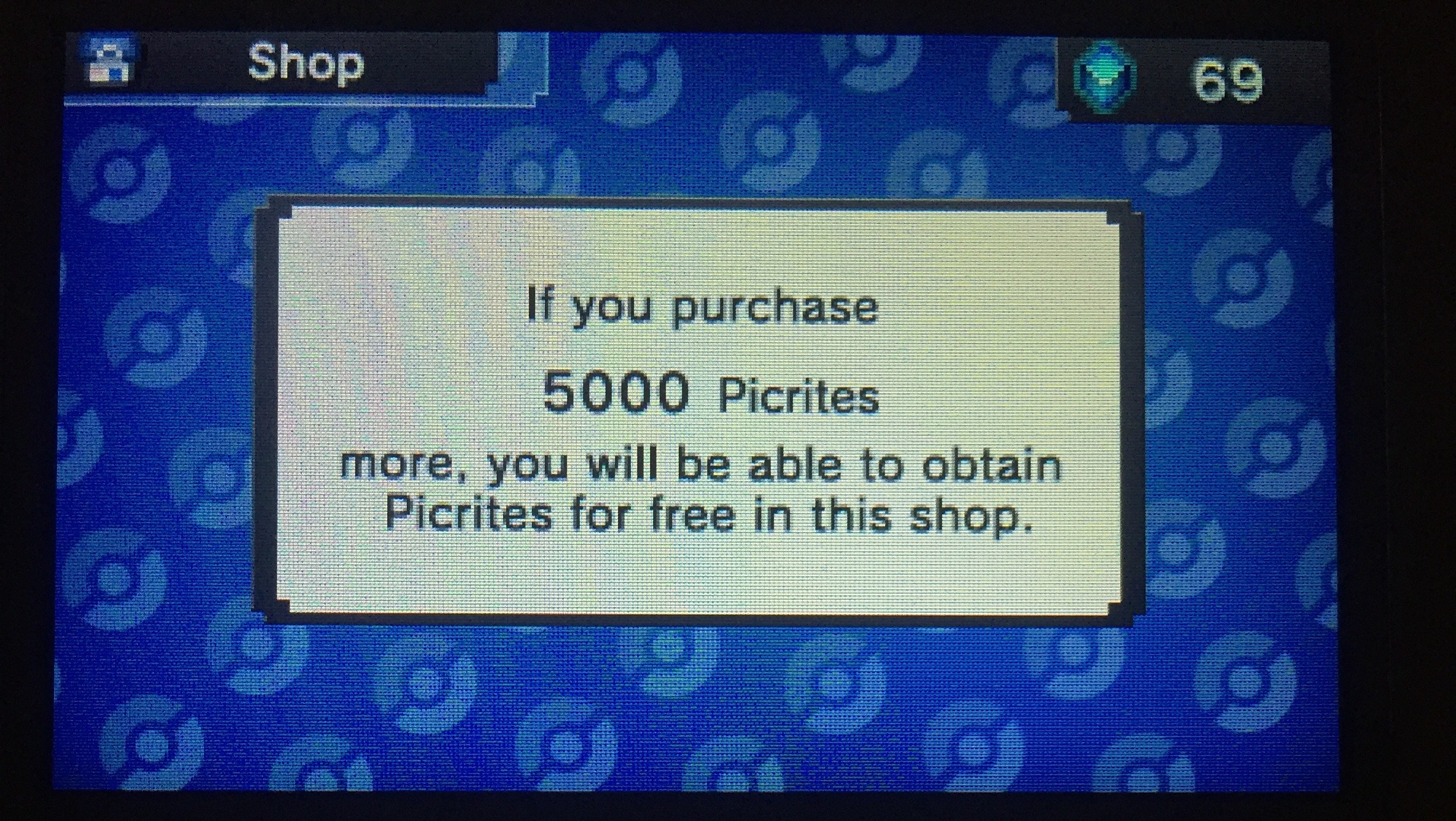
You can also eradicate the energy meter by upgrading it (with Picrites) five times. At level five, you have infinite energy.
The spending model does introduce an annoying meta-game. With previous main Pokémon and Picross games, you could just play as long as you’re having fun and not wind up trying to manage your play time and wait until your energy fills back up and debate how much to spend to keep playing. It’s a nuisance, but, thankfully, it’s at least a temporary, capped nuisance. I do wonder if I’ll find the need to spend another $US15 ($21) to enjoy the game at my own pace. That I can’t judge yet.
I’ve had a great time with the game so far. Highly recommended.
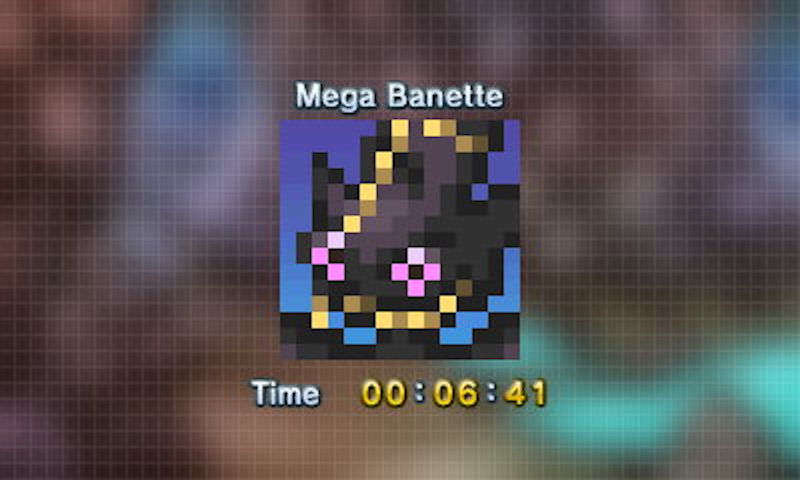
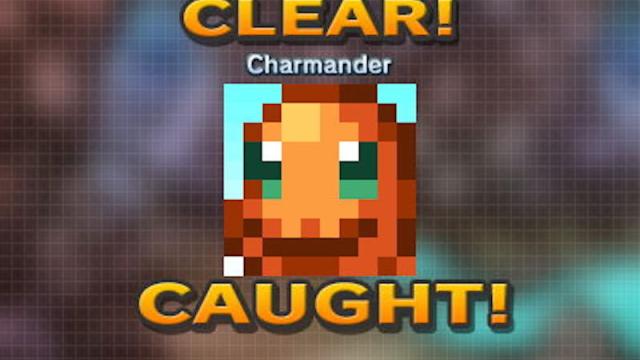
Comments
6 responses to “Pokémon Picross Crossover Is Pretty Close To Perfect”
Picking this up asap.
Goddamn I love Picross.
Did not know this is out. Will download it tonight. How much would it cost to upgrade it to unlimited energy?
Let me see… I’ve put in a few hours now, and have paid for the reduced price 200 and 800 Picrite bundles. That’s cost about $10 AUS, give or take.
That’s unlocked unlimited energy, about 6 areas and Alt world, where all the standard puzzles are Mega puzzles. That’s about… I guess 30 odd puzzles to play an unlimited times, maybe more.
The amount of Picrites I have now is very low though, not enough to open new areas. I’ll see how I go with playing all that content, and then consider purchasing more.
Mind you, I don’t think you need to pay anything. You will get time locked a lot, and it’s going to be a very patient journey to fulfil, as you are barely getting enough gems to unlock new basic maps, let alone all the more unusual stuff like mega puzzles and mega evolutions. But it’s theoretically possible if you are patient enough.
I’ve paid about the same as a standard Picross game, and the content quality, quantity and controls are comparable so far. 🙂
Nice. I caved in and bought the 800 pack and have unlimited energy now and in the 3/4 area I think. Might pick up the 200 pack and see how it goes later on. I think I have enough to go for 2/3 more area
I found that as I played on, the amount of Picrite I need to unlock new areas became unsustainable. By area 8 or so you start needing 100 Picrite per new area unlock. You only get about 30-50 odd Picrite per area, so things get tighter and tighter as play goes on if you waste it on unnecessary stuff.
Unlocking Alt world is 300 odd Picrites, off memory. 500 Picrites allows you to attempt Mega Evolution puzzles. Both of those are once off expenses. To clarify, it’s one 500 Picrite fee to unlock the ability to attempt all Mega Evolution Puzzles an unlimited number of times, not 500 per attempt or per different Pokémon.
In Alt world, all puzzles you have already beaten you can try again in Mega Picross mode, but with different missions. These missions do not net you any further Picrite, however. Any areas you unlock in the main mode also unlock in Alt world.
You don’t need to unlock those two features, but if you do, it does enhance the game play by giving more puzzles, challenges and more powerful Pokémon.
If you want to go on the cheap though, try to avoid unnecessary energy boosts or Pokémon team slot unlocks, avoid the Alt world and Mega evolution unlock, and just put it all into opening new areas. You will be time gated by energy, and you will likely need to upgrade energy at least once to even attempt the larger puzzles, but at least it will stretch your free Picrites out as much as possible.
Even if you unlock all the modes and get unlimited energy, you still get time gated. Using Pokémon abilities tends to cause them to have cool downs until their abilities can be used again. You may have several puzzles in the one area that require the one type of ability or class of Pokémon, so you can only do so much at once if you want to get a full mission clear every time you can.
For new players: if you press X after selecting a new challenge but before playing it, you can see the mission requirements before you start and adjust your Pokémon team accordingly.
I bought an extra 2000 Picrite pack for an extra $20AUS odd, in addition to the discounted 200 and 800 packs for another $10AUS. Considering though that you get over 300 puzzles, plus the repeatability and extra challenges of missions and Mega / Alt World mode, I’m okay with that. If you don’t want to spend cash, just be patient and aim for area unlocks, as I said above.
Hope that helps. 😉
Love Picross more than I love Pokemon. Will gladly play this until energy has run out, then play something else until it’s back up. Never spent a cent on F2P and unlikely to start now.